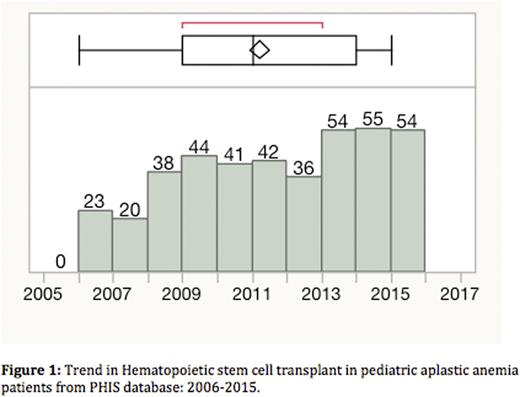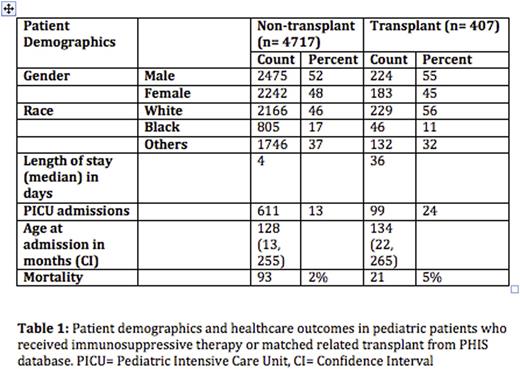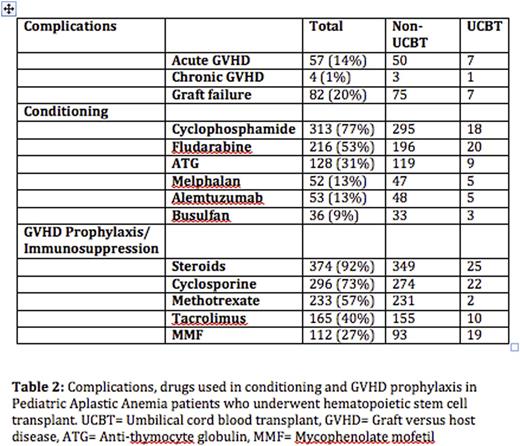Abstract
Background: Aplastic anemia (AA) is a rare bone marrow failure (BMF) syndrome of unknown etiology characterized by hypocellular bone marrow and severe persistent pancytopenia. Pediatric AA is more common in adolescent age group with better outcomes as compared to adults. Current treatment modalities include immunosuppressive therapy (IST) or matched related bone marrow transplant, when possible. There is a high risk of disease relapse with IST and clonal evolution into myelodysplastic syndrome. There is limited pediatric data on outcomes with different treatment options.
Methods: Retrospective database analysis of Pediatric Health Information Systems (PHIS) database was performed to evaluate healthcare outcomes of pediatric patients (age less than 21 years) with AA from January 1, 2006 to December 31, 2015. PHIS is an administrative quality-controlled database from 43 not-for-profit children's hospitals. ICD-9 code 284.9 was used to identify patients with acquired AA. Appropriate procedure and pharmacy billing codes were used to obtain information regarding transplants and various drugs used. SAS based statistical software was used to perform analysis.
Results: A total of 5127 inpatient admissions were noted for AA during the study period. An overall increasing trend of transplant was observed from 2006-2015 (Figure 1). Almost equal inpatient admission rate was noted in males and females, with a slightly higher rate amongst males who underwent transplant (55% vs 45%). Inpatient admission was more common amongst whites in both transplant (n=407, 8%) and non-transplant groups (n=4717, 92%; Table 1). Overall inpatient mortality was about 2% with a similar mortality in those who underwent transplant (5%). Cyclosporine (n= 1785, 38%) and steroids were most common immunosuppressive drugs used in non-transplant group. In the transplant group (Table 2), graft failure (20%) was the most common complication, while Cyclophosphamide (77%), Fludarabine (53%) and anti-thymocyte globulin (31%) based conditioning was most commonly used. Transplant itself was an independent risk factor for mortality (p=0.04) along with graft failure (p=0.02). Steroids (92%) and Cyclosporine (73%) were the most common immunosuppression used.
Conclusion: Hematopoietic stem cell transplants have good outcomes in pediatric AA patients. With an increasing trend of HSCT in these patients, successful outcomes with other transplant options such as match unrelated donor transplants should be considered. Treatment algorithm for Pediatric AA needs to be revised to include other transplant sources.
No relevant conflicts of interest to declare.
Author notes
Asterisk with author names denotes non-ASH members.




